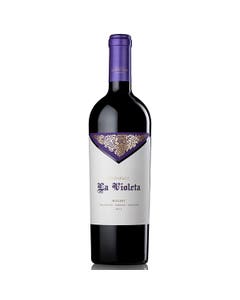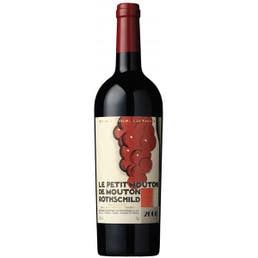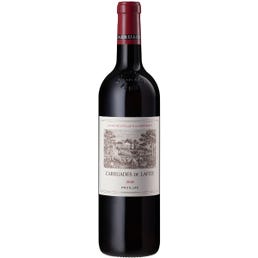Château Pichon Lalande 2010
• Domaine: Château Pichon Longueville Comtesse de Lalande
• Appellation: Pauillac
• Classification: Second Growth, 2ème Grand Cru Classé
• Origin: Left Bank, Bordeaux, France
Many châteaux in Bordeaux are passed down from father to son and run by men, and one often hears winemakers rhapsodize poetically about the union between, “man and vine.” Because of this, the story of Château Pichon Longueville Comtesse de Lalande is a unique and important one. It is a story about feminine influence. The success of this illustrious Super Second is due to the contributions of powerful women who championed it throughout the ages. Because of this, the stunningly voluptuous wines of Château Comtesse de Lalande are drinkable proof that girls do indeed rule.
The origins of the property date back to 1850 when Baron Joseph Pichon Longueville divided his large estate in two upon his death; his male heirs received Château Pichon Longueville au Baron and his daughters received Château Pichon Longueville Comtesse de Lalande. In the 18th Century, the property was run entirely by three women: Therese de Rauzan, Germaine de Laujus and Marie Branda de Terrefort. Though it stood adjacent to the First Growth Château Latour, the wines from Comtesse de Lalande carved out a distinct taste profile from the traditional Pauillac style. They were considered sensual and feminine. After a few years, Virgine, the wife of the Count de Lalande, took over management of the estate. She made many contributions including commissioning the popular architect Duphot to build a residence inspired by the Hotel de Lalande located in Bordeaux. Instead of passing down the estate to male heirs, the estate was passed from aunts to nieces. The female legacy was honored, and the estate remained in the hands of the same family for over 250 years.
In 1978, May-Eliane de Lencquesaing became the new owner and manager of Château Pichon Comtesse de Lalande. She was nicknamed, “Le Générale,” partially because of her husband’s military background and partially because she was a force to be reckoned with. In addition to increasing the size of the property from its original 40 hectares to 89 hectares, she traveled the globe and was a fierce champion of the Bordeaux region. Under her management, quality of the wines skyrocketed, and they earned international recognition and critical acclaim. Eventually, May-Eliane de Lencquesaing sold the estate to Champagne Roderer in 2007. Roderer understood the importance of the feminine influence at Comtesse de Lalande and hired Sylvie Cazes to oversee the property. The estate was renovated and modernized, with a targeted replanting program and a triple tiered gravity-controlled cellar that cost upward of 15 million Euro. This allowed the winemaking team to create softer, more supple wines at the Pauillac estate.
Though less of the grand vin is being made now, the quality continues to improve. With both holdings in Pauillac and Saint-Julien, these 100% organically farmed wines require a bit of time to unfold. They are softer than other Pauillacs but generally require at least 10 to 12 years of bottle ageing to show their sublime secondary characteristics. Their textures are astonishingly silky, and they offer exquisite notes of truffle, dark berry, cassis and cedar. Because of the consistent critical acclaim, this estate would be up for a promotion to a First Growth should a reclassification ever be in the cards.
Tasting Notes
"An eternal wine, the 2010 Pichon Lalande is a total showstopper. The first impression is one of explosive power, but time in the glass brings out the wine’s more delicate, floral side. Violet, graphite, crème de cassis, licorice and menthol overtones recall the 1996, but the tannins here are much softer, sweeter and more polished. In two recent tastings, the 2010 has been positively stellar. The alternation of hot days and cool nights led to a late harvest. The Cabernet Sauvignon harvest did not start until October 7; by that date in 2009 all the fruit was in. Readers who can still find the 2010 should not hesitate, as it is a modern-day classic. That’s all there is to it." - Antonio Galloni, vinous.com, (October, 2017), Ratings: 98, Drink: 2025-2060
"The 2010 Pichon Lalande is performing extremely well and at the top of the range I predicted several years ago. A final blend dominated much more by Cabernet Sauvignon than usual (66% Cabernet Sauvignon, 24% Merlot, 7% Cabernet Franc and the rest Petit Verdot), the wine is a tighter, more tannic and structured version of this famed Pauillac, which often tends to have more of a St-Julien-like personality than most Pauillacs. Structured, backward and tannic, yet showing a fat mid-palate that is more savory, broader and more expansive than I remember from barrel, this wine is somewhat reminiscent of the 1986, given the Cabernet Sauvignon domination of the blend. Full-bodied, impressively endowed, and less sexy and velvety than normal, this is a somewhat different style of Pichon Lalande than most readers have been used to. Whether you like it more or less will depend on your point of view, but this wine, unlike most Pichon Lalandes, needs a good 5-7 years of cellaring and should keep for 30+ years." - Robert Parker Jr., The Wine Advocate (2/27/2013, Issue 205),Ratings: 95+, Drink: 2018-2048
| Stock Status | Out of Stock |
|---|---|
| Appellation | Pauillac |
| Vintage | 2010 |
| Brand | Château Pichon Lalande |
| Shipping Weight | 3.000000 |



















